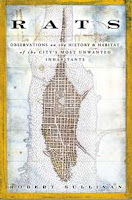I feel like making excuses today. Not that it\’s useful, and if you think it lame, go ahead and skip over this post. But it makes me feel better, for some reason! My presence on the blogging scene has been waning here, lately. So much else has been going on in my life. My daughter just started her first week of kindergarten, and I\’m still getting used to the change in schedule. My husband has been facing the possibility of a strike at work for the past few weeks, and we\’ve been very worried about that (but thankfully found out last night it\’s not going to occur, they reached an agreement. I\’m so glad!) My garden has been going through a transition from summer into fall, so I\’m busy cleaning up dead plants and putting in new ones. And I just found out I\’m now expecting my second child!
So all in all, I\’ve been rather preoccupied. The original goal I had here of posting about a book every day, whether a new one I\’ve finished or an old one I read in the past, has been sliding. I\’ve just been keeping up with currently read books lately, and although I do have over a hundred blogs in my reader and look at all your posts every day, sadly I haven\’t been commenting much. It\’s just so hard to keep up with it all. I haven\’t even felt the energy to really take part in BBAW, although I\’m enjoying following along with the excitement from the sidelines, as it were. But I\’m still here! Still reading! Just a bit too busy to write much. As school gets settled in, the garden goes to sleep for the winter, and I get used to the idea of two kids, I\’ll be back in full blogging force. And then you\’ll get tired of me yapping here all the time about books in sundry.






